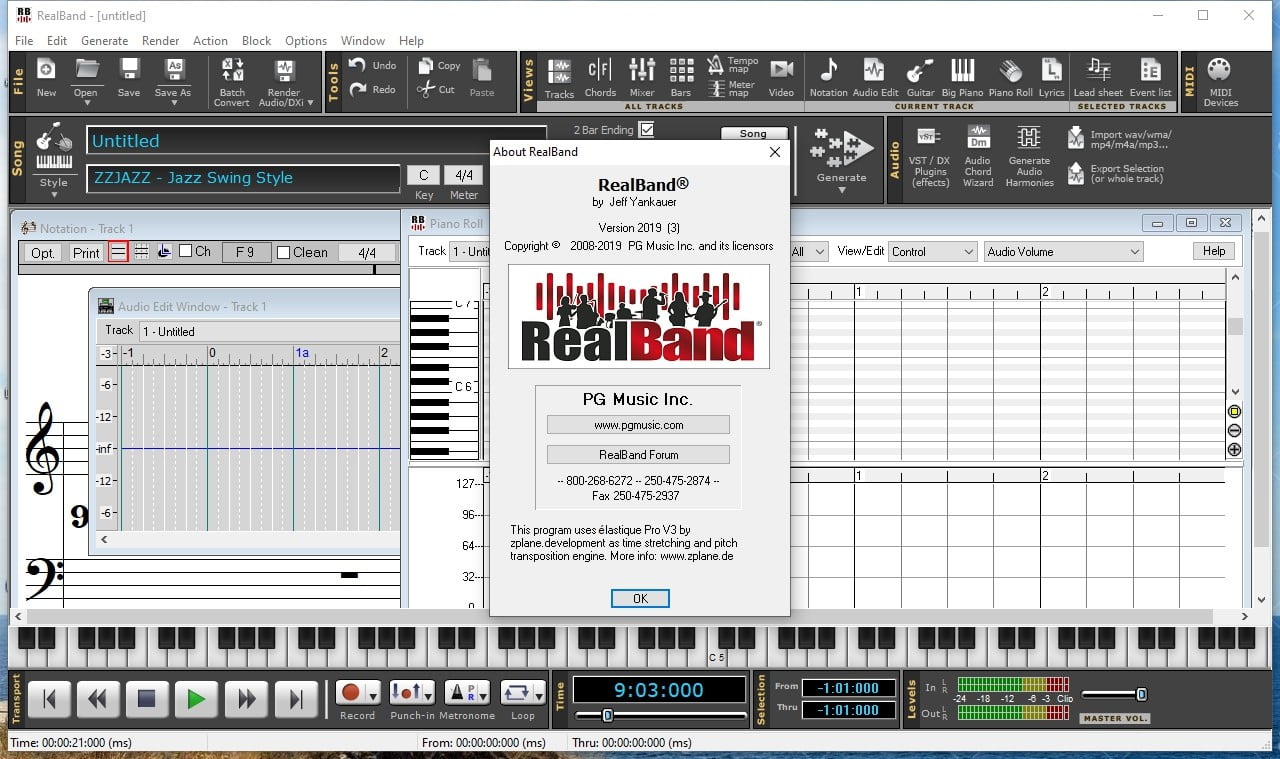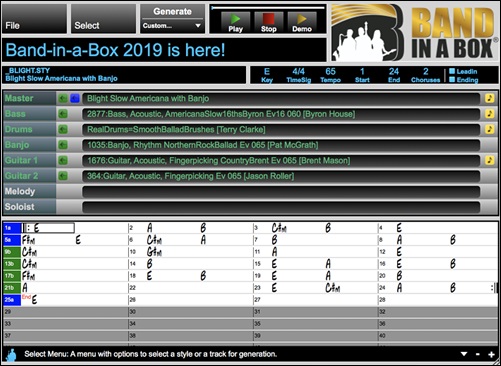

- #Band in a box tracks how to
- #Band in a box tracks zip file
- #Band in a box tracks full
- #Band in a box tracks software
- #Band in a box tracks download
Make sure your computer isn't doing anything important (the software will drastically slow your computer down during conversion) This method also allows multiple files to be converted simultaneously using all the cores of multicore CPUs and is faster than the Lightroom Method. I found that method to be the most effective, clean and ideal for neat file management. Settings -> Process Batched Images One by One to be UNCHECKED Settings -> Reduce Processor Utilization to be CHECKED Sharpening to NONEĭefault camera profile to Iridient Standard Expect your DNG files to be of larger size than your RAF files. I invite you to try his and mine as well as play around with the software to tweak the results to your liking. Here are my settings, inspired by this author and tweaked to my liking (least a.
#Band in a box tracks how to
In this part of the blog, I'll show you how to use the converter through simple steps. In the xtransformer converted DNG file on the right, each pixel is given space to display information.

The orange handle of the shovel almost bleeds into the brick wall behind. When inspecting the RAF file on the left, we can notice a lot of smudges and over-sharpening artifacts in the center of the image on the tree trunk and branches. This first image of the apartment buildings is shot at 1/125 f8 to remove camera shake and hints of lens softness.
#Band in a box tracks zip file
I have included more images in the zip file for further personal comparisons. For the sake of this page, I have compressed them, but they can be found in max quality in the zip file.
#Band in a box tracks download
Here are some examples (you can download the raw files HERE for personal use only). Since X-Transformer rearranges the Xtrans color array into a typical Bayer array, the resulting digital negative will appear in Adobe softwares without the usual artifacts. This generates the "waxy watercolor" effect that many would notice on foliage and fine detail. Therefore, Adobe is prone to skip colors and create voids of information that will need blending later on. Since Fuji's Xtrans sensor array is different from that of typical Bayer camera sensors, the sequence of colors is usually confused by the Adobe Camera Raw engine. Since C1 offered marginal improvements to my results at the sacrifice of a steep learning curve and inferior "file stretching" abilities, I chose to continue working with Lightroom. As such, C1 and C1 Fuji is one and the same. Last time I spoke with the Fuji representatives, they told me Fuji simply paid Capture One to have the name appear next to the software name without much optimization. While I can understand its use for absolute images, it lacks the workflow speed and intuitiveness of Lightroom which I use on a daily basis for a living.
#Band in a box tracks full
When shot at Auto DR + Auto ISO + Exposure compensation Zero, the resulting file allows an insane level of flexibility with full highlight and shadow recovery (unlike my Nikon NEFs which only allow shadow recovery). Any thought welcome.While Fuji JPGs are pleasing to most Fuji users, I prefer exploring the full potential of the Fuji raw file in order to reach a level of visual fidelity to the content I chose to capture. It was certainly good for LR, but for C1 I've no definite idea about necessity. I would like to hear opinions if Iridient transformer is still necessary when using C1. I haven't seen the Iridium settings tools being outrageous better, I use iridium for the core business only to interpret the Xtrans data. It is all bloody time consuming enough working in LR or C1 so that I really don't need another page of Iridium settings to deal with, so I keep the iridium settings fixed as lean as possible. So I don't use it to play with it's settings for varying pictures, I've found my general preferred Iridium settings and done with it. You ain't got a preview when you play with Iridient settings, it's so cumbersome to fool around with it, there is no flow in working with it. So far if I want smoother I'll use post processing for that. Please share a clue if you have one, thanks.

MORE DETAILED did not showed me pixel peeping problems in various shots, to be honest I have no idea why SMOOTHER exist. So I only had to bother about Iridient MORE DETAILED or SMOOTHER. Therefore I choose to have only 1 setting in Iridient that seems to work for all, and leave the rest of tasks to LR or C1 or PS. If you start to jockey around with setting in Iridient differently for different kind of pictures, are you really going to keep track of what you do in iridient compared to what you did in LR or C1 or PS? Sometimes I feel like it did nothing at all? Iridient could do a better job in finding/treating CA. For all purposes I have only 1 setting no matter what program follows.:


 0 kommentar(er)
0 kommentar(er)
